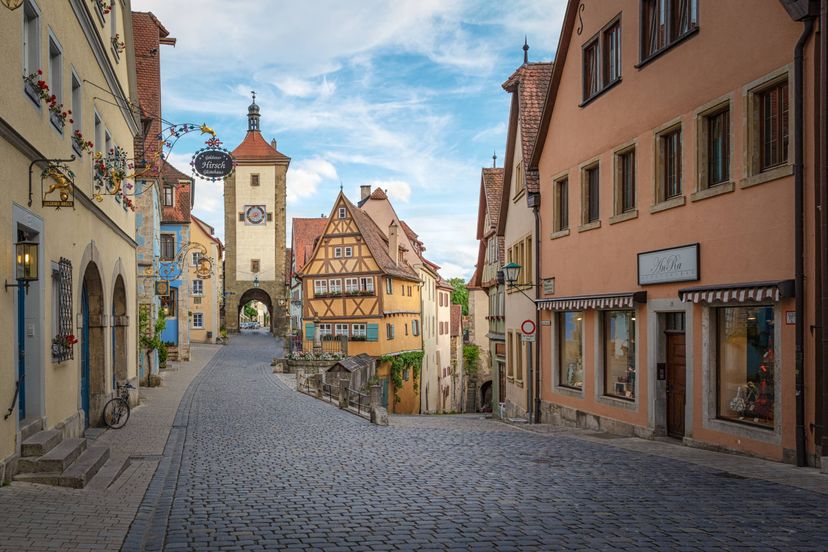
In a country filled to bursting with medieval villages, charming towns, idyllic small cities, and gorgeous scenery, it’s tough to narrow down a list of the 10 best places to visit. We’ve left out the big cities, of course, as they’ve got enough lists of their own. Instead, we’ve put together a mix of tiny towns and smallish cities and tried to pull from various regions to help paint a full picture of the beauty of Germany. This list is guaranteed to make travelers want to visit at least a few of the 10 of the most enchanting towns in Germany.
Advertisement
10. Lindau, Bavaria
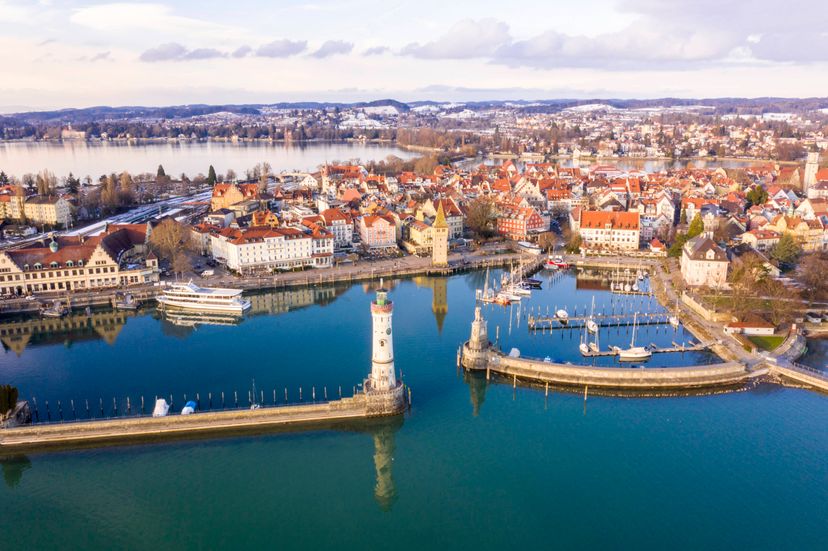
Lindau’s old town sits on a small island in Lake Constance, near the borders of Austria and Switzerland. That makes its setting almost obscenely beautiful, set within aquamarine waters reflecting the mountains and shores of both Lindau’s neighbors. The entrance to the town’s harbor is captivating, featuring the Der Bayerische Löwe (Bavarian Lion) towering on one side, and a lovely little lighthouse flanking the other. The best way to view both the harbor and the scenery surrounding Lindau is to hop on a ferry. The lakeside can also be explored via bikes, which are available to rent in town. Because the majority of Lindau’s charm lies in its beauty, feel free to relax. Stroll around town, check out the garden district, then sit back and enjoy a glass of local wine while sampling cheese and fruit from nearby farms and orchards.
9. Meissen, Saxony
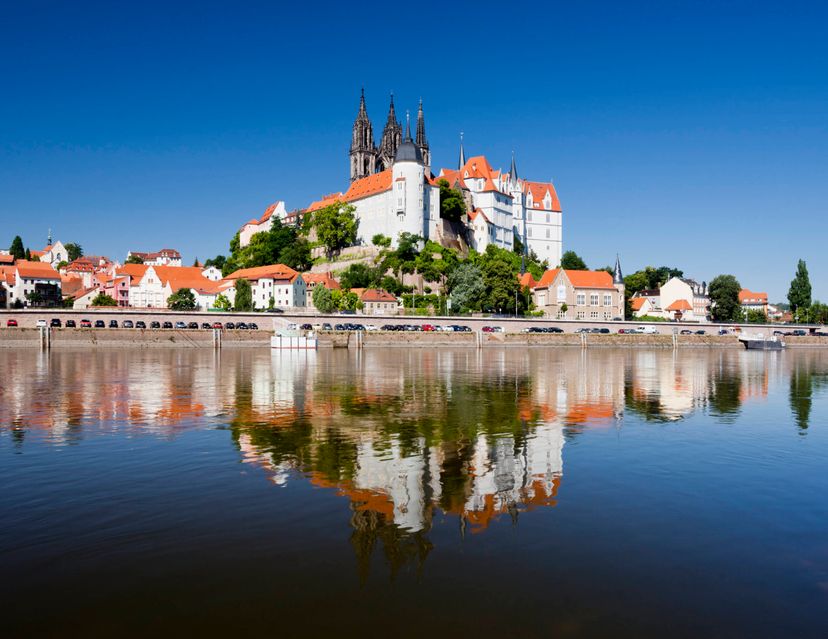
This eastern town is famed for its porcelain, which it’s been producing since 1710 and is still selling today. But even those not interested in picking up a piece of china bearing Meissen’s distinctive crossed swords should take time to browse the town. Of course, you’ll run into more porcelain in the Market Square, where the Frauenkirche features porcelain bells that ring throughout the day. Climb the church’s 57-meter tower for great views across the old town’s red roofs to the Elbe River beyond. Be sure, too, to check out the Albrechtsburg, the town castle featuring murals depicting Saxon history as well as soaring interior arches painted with beautiful designs. Here, too, you’ll find information on porcelain, proving it’s really not possible to entirely escape Meissen’s most famous product.
8. Ulm, Baden-Württemberg
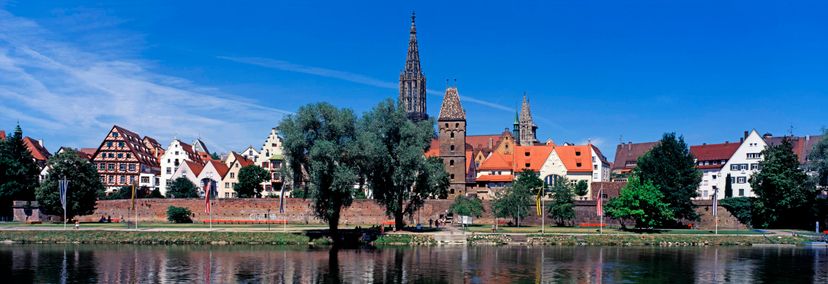
In a country packed full of picturesque towns, Ulm rarely cracks Germany’s top ten lists, yet visitors could do far worse than to stop off in this small city when making their way from Baden-Württemberg to Bavaria. The town’s big draw is the Ulm Minster, which features the world’s highest church steeple at 161.5 meters. Visitors who climb the 768 steps to the top will be amply rewarded with a view stretching across all of Ulm and, on clear days, the rugged peaks of the Alps. The Fischerviertel, or Fisherman’s Quarters, makes a beautiful place for an afternoon stroll, with half-timbered houses and hidden footbridges crossing the canals. Climb the old city walls for a different perspective on the neighborhood, then head back toward the center of town to view the cheery murals adorning the Rathaus, the town hall built in the 14th century.
7. Trier, Rhineland-Palatinate
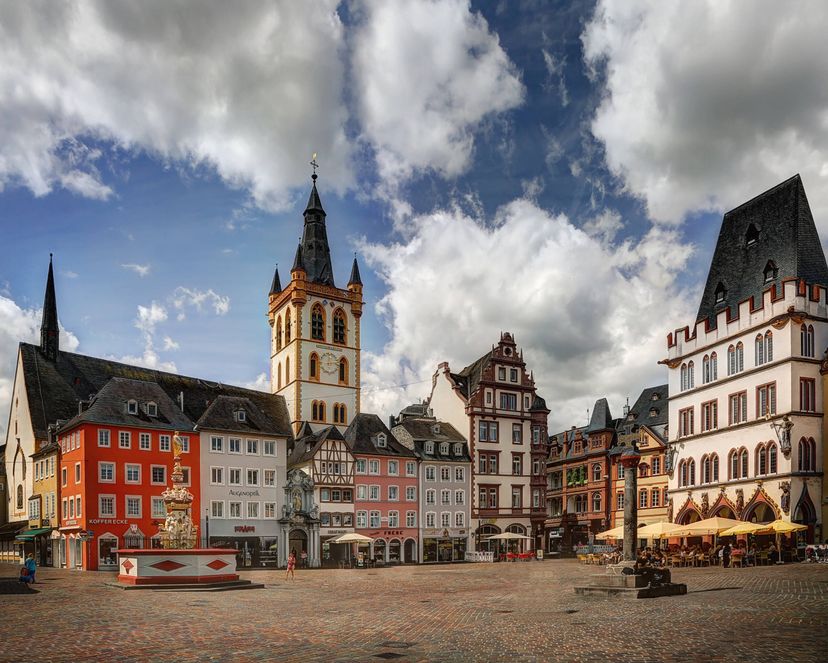
This small city near the Luxembourg border is said to be the oldest in Germany, founded by Augustus in 15 B.C. – but supposedly inhabited 1,300 years before that. Fittingly, Trier boasts Germany’s best Roman ruins, including an enormous bath complex complete with underground tunnels that are fun to poke around in. Be sure to visit the archaeological museum as well, with plenty of Roman artifacts and artwork. Trier also features Germany’s oldest Christian church (of course), rebuilt after it was damaged in World War II and now a UNESCO World Heritage Site. But don’t completely ignore the present! The Hauptmarkt, or Market Square, maybe framed by old buildings and marked with a Renaissance fountain, but it’s filled with contemporary bustle, so take some time to stop and take it all in, preferably with a glass of local Riesling from the Mosel wine region.
Advertisement
6. Monschau, North Rhine-Westphalia
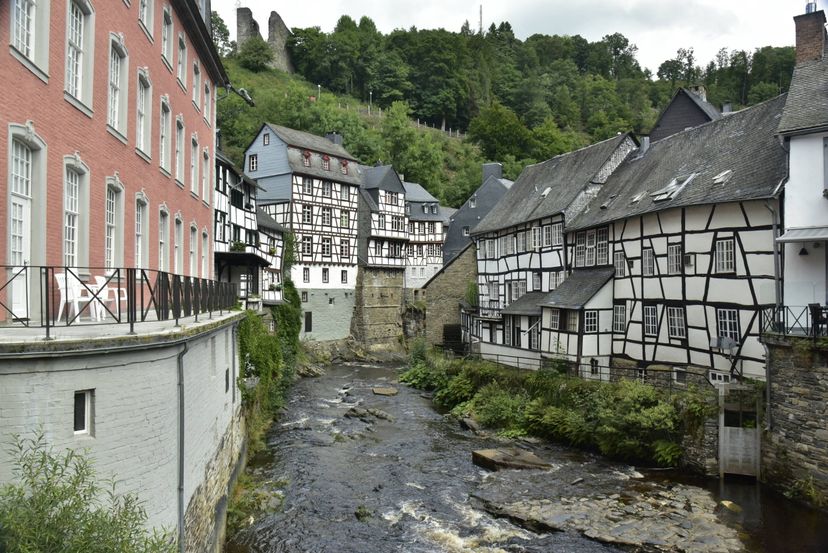
Just stick a toe outside Monschau and you’re in Belgium, two kilometers over. But this tiny Rhineland town looks like it’s been lifted straight from a period drama about Germany. It helps that World War II passed Monschau by, leaving it looking just as it did centuries before. The locals capitalize on this, and the town is virtually dedicated to tourism – all without a major attraction to draw visitors. No, the beauty of a day spent in Monschau lies simply in sitting in its cafes and wandering its streets, admiring the half-timbered houses and relaxing alongside the River Rur. Despite its dedication to tourism, Monschau doesn’t feel crowded, possibly because there’s no train station in town, making it harder to reach for visitors. Try to visit at Christmastime, when the entire town seems to blend in with the Christmas Market, making it feel like a page ripped from a child’s storybook.
5. Heidelberg, Baden-Württemberg
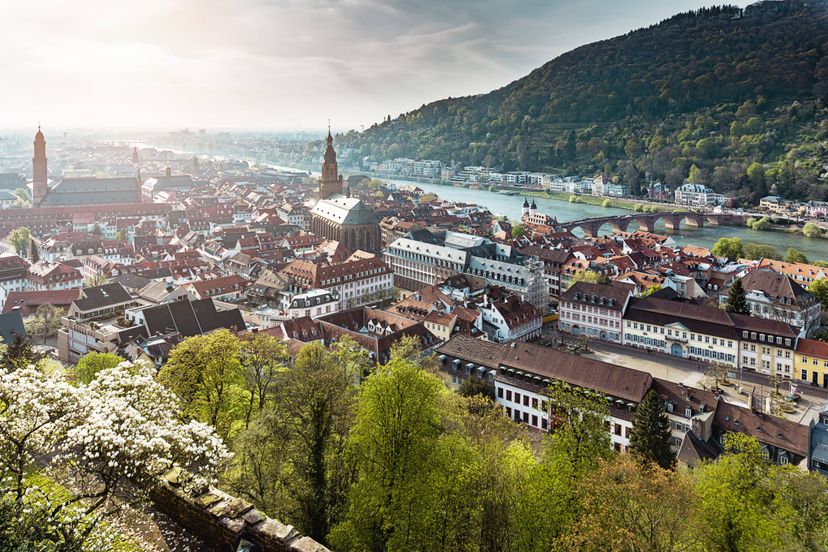
This small city has definitely been discovered, with many calling it one of the most romantic (or perhaps Romantic, owing to its architecture) towns in the world. But even those without a hand to hold are likely to become enchanted by Heidelberg. Wake up early and get to Heidelberg Castle, a sandstone pile sitting 80 meters above the town, before the crowds. While it’s possible to take a tour, the biggest draw is in simply wandering the castle’s grounds, searching for the best view of the city sprawling below. To capture the castle itself, cross the River Neckar to stroll the Philosopher’s Walk. Use the Old Bridge to return to the Old Town, where a mile-long pedestrian street permits tourists to roam freely. And for those seeking more fun in the evening, the city’s university population guarantees there’s always something fun going on at night.
4. Mittenwald, Bavaria
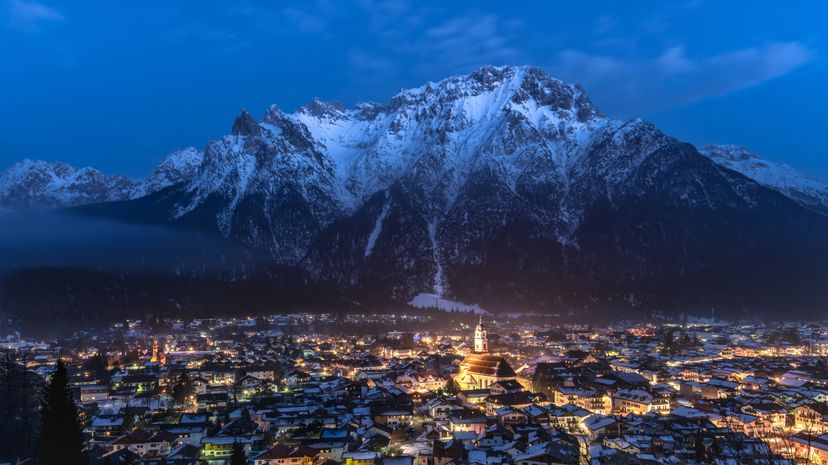
German writer Goethe called Mittenwald a “picture book come to life,” and even 200 years later, that description still rings true. Situated at Germany’s southern border, the little town huddles underneath the towering Alps, yet even such a majestic setting doesn’t manage to overshadow its cuteness. Rather than the muted tones and timbered buildings found throughout much of Germany, Mittenwald embraces color. The storefronts are covered in murals and enhanced with intricately carved details, while the houses along the main street are painted in Easter egg hues that show off their flowing flowerboxes and gilded touches. Music lovers, in particular, will love this “Village of a Thousand Violins,” where the modern version of the instrument was developed and handmade string instruments are still produced. Some of the frescoes in St. Peter and St. Paul Church even show the angels playing violins and violas.
3. Quedlinburg, Saxony-Anhalt
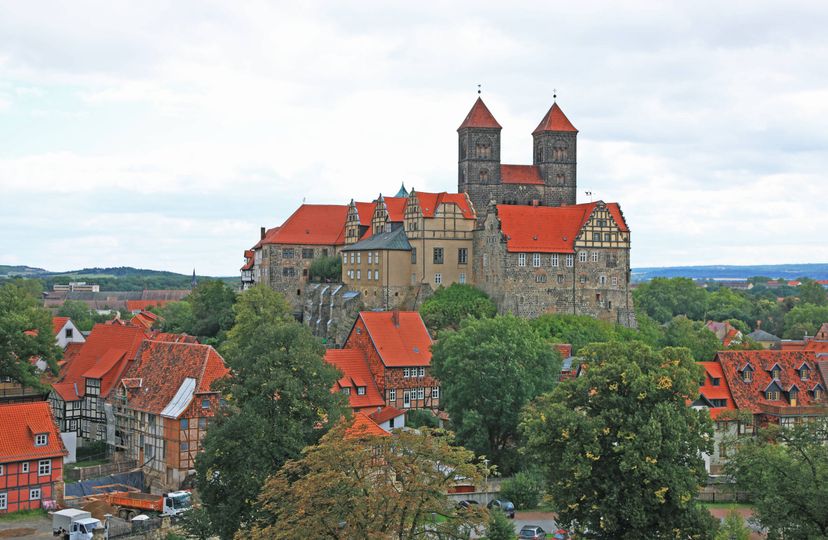
Travel back in time with a stop in Quedlinburg, one of the best-preserved medieval towns in the world, a fact recognized by its placement on the UNESCO World Heritage list. Visitors can spend hours just wandering the narrow streets of the old town, taking in the timber-framed buildings, of which there are over 1300, all incredibly well preserved. This is also where the oldest half-timbered house in Germany resides, built in the 14th century and now housing a museum dedicated to explaining the history of this architectural style. Head up the cobblestone streets leading to castle mountain, where the Abbesses’ Palace can be explored. The abbey church contains the Treasure of Quedlinburg, an amazing collection of golden and jeweled objects that was actually stolen by an American soldier in World War II, and finally returned in 1993. Walk up the hill opposite for the best views of the castle and the town stretching out below.
2. Cochem, Rhineland-Palatinate
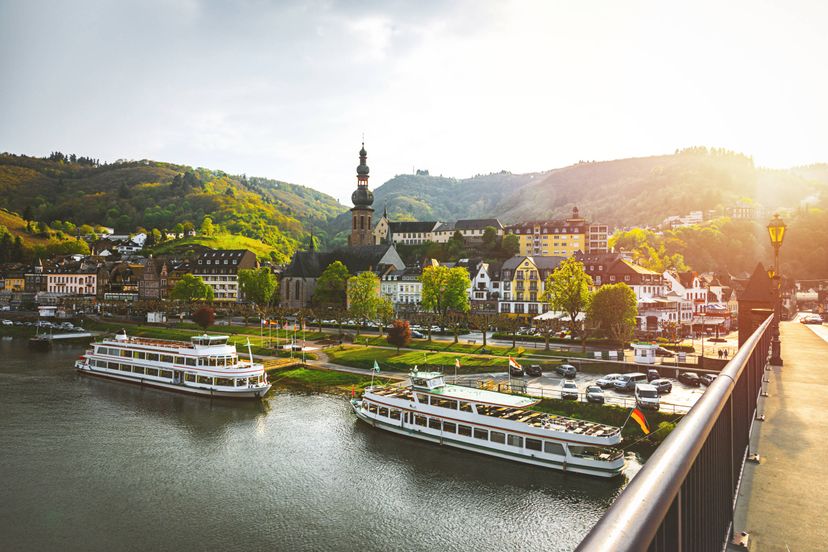
This is the second town in the Mosel River Valley that makes our list, and some might be wondering why, if they’ve already stopped in Trier, they should bother with Cochem? What makes this tiny town so unique? Once visitors take a look up the hill and glimpse the massive castle overlooking Cochem, they’ll understand. The castle dates from the 12th century, but it was destroyed by the French in the late 17th, and then rebuilt in 1868. Although built in a neo-Gothic style, the castle does retain a few of its original features, like the distinctive “Witches Tower.” The view from the castle grounds stretches across the town and river and into the steep hills and green vineyards beyond. Be sure to take a wine-tasting tour or, at the very least, stop in at one of the town’s cozy restaurants that serve up both tasty regional cuisine and plenty of Mosel wine.
Advertisement
1. Rothenburg ob der Tauber, Bavaria
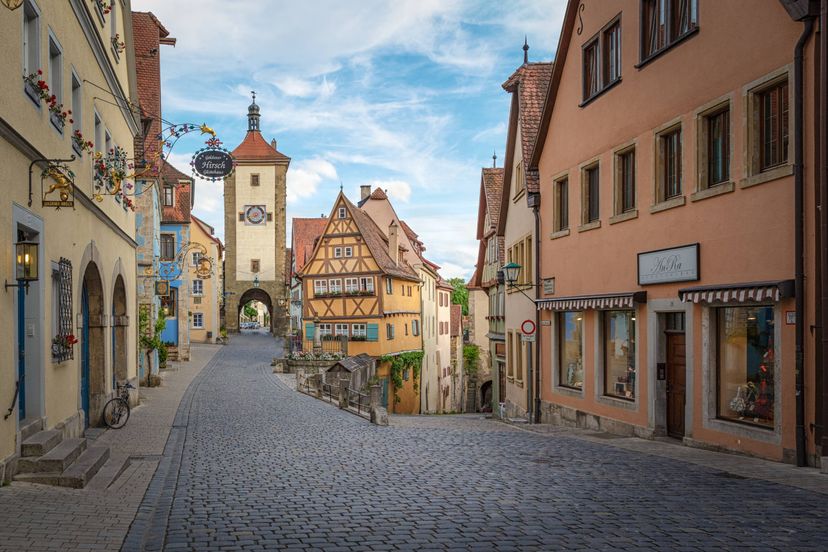
For those who’ve already delighted in seeing Neuschwanstein Castle, the inspiration for Disney’s Sleeping Beauty Castle, Rothenburg will be a dream. This is the village that Disney brought to life in Pinocchio, and if that’s not enough, parts of Harry Potter and the Deathly Hallows were also shot here. It’s easy to see why – even in a country filled with medieval villages, this one stands out for its sheer perfection. Because of this, it’s stuffed with tourists, but those spending the night will have the charming cobblestone streets to themselves in the early hours and after dark. Use that time to admire the half-timbered buildings, poke around in the shops, and stroll the city walls with relative ease. And be sure to take a walk outside the city walls after nightfall, as the glow from the softly lit stone is breathtaking.
Advertisement